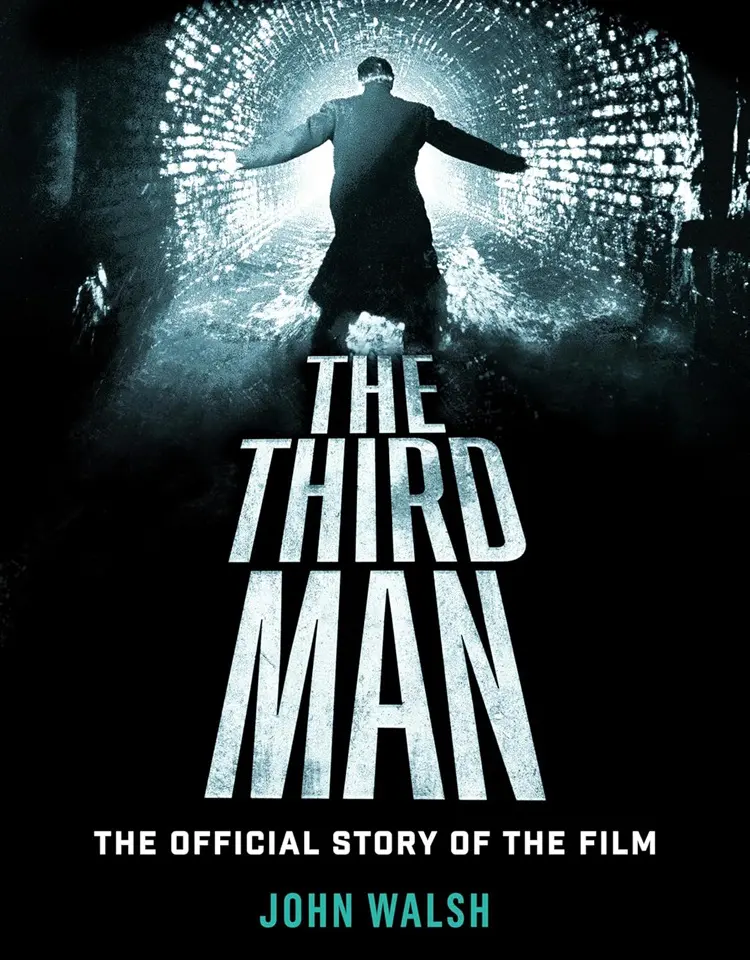
In the Introduction to The Official Story of the Film, author John Walsh states Carol Reed’s The Third Man “influenced some of the 20th-century’s most revered filmmakers, including Akira Kurosawa, William Friedkin, Peter Bogdanovich and Martin Scorsese,” some of whose reactions are quoted later in the book. Walsh then offers a synopsis of the plot and reveals that although “Orson Welles looms large over the production…, this film belongs to…author Graham Greene [who] is regarded as one of the greatest novelists and screenwriters of the last century.”
Buy The Third Man: The Official Story of the Film hardcoverStarting in “Cold War Vienna,” where the film was shot, readers get a brief history about post-war Austria and why producer Alexander Korda wanted to work in the war-torn city. Following chapters focus on Greene; Reed; Korda and his British Lion & London Films, Third Man‘s distributor and production company; and the partnership and battles between producers Korda and David O. Selznick, which occurred before, during, and after Third Man, although they were in agreement that each felt “they did not receive enough of the money or credit for [its] success.”
On “Casting the Film,” there are thorough sections presenting brief biographies and details about the hiring of actors Welles, Joseph Cotten, Alida Valli, Trevor Howard and brief snippets about the supporting cast and local witnesses (uncredited actors with small roles).
Moving onto “The Shoot,” Walsh’s writing takes readers to locations and reveals movie-magic secrets, such as assistant director Guy Hamilton (who would direct four James Bond films) doubling for Welles, one example of the difficulties that occurred in working with Welles. Walsh also deflates some of the film’s legend by stating more than once that “although the full cuckoo clock speech was Welles’s idea…he did not originate the words.”
The book credits crew members such as cinematographer Robert Krasker, whose work won the Oscar for Best Cinematography – Black and White in part from the extensive use of the Dutch Tilt, “the deliberate distortion of the level horizon line in the film frame.” The Third Man is “widely regarded as the film that makes best use of the method to add to the story and drive the narrative.” “Shooting at Shepperton Studios” allows for a focus on the work of scenic artist Ferdinand Bellan and of matte painter Walter Percy Day. The reader also learns of tense conversations at the end of the shoot as the money was running out. Editor Oswald Hafenrichter’s work is written about and composer/ performer Anton Karas gets his own chapter about “The Music of the Zither.”
In “Release: The Various Versions of the Film,” the changes Selznick made to the American release are noted. “The Legacy of The Third Man” demonstrates how the film lived on through different media. “The Adventures of Harry Lime” was a prequel spin-off radio show starring Welles. There was a short story collection, and a TV series starring Michael Rennie as Lime. There’s even a museum in Vienna run by “a dedicated enthusiast…[who] has been collecting artefacts associated with the film for almost thirty-five years.”
The Third Man: The Official Story of the Film is a thorough and engaging examination of various stages of the production. The book will be cherished by fans of the movie and of movie-making. In addition to being a well-written resource, it makes a fantastic coffee table book to pore over. Filled with many pictures from the set and behind the scenes, its dimensions of 10” x 13” allow for some images to take up a full page. There’s also a two-page spread of various international book covers of The Third Man and multiple pages of movie posters.